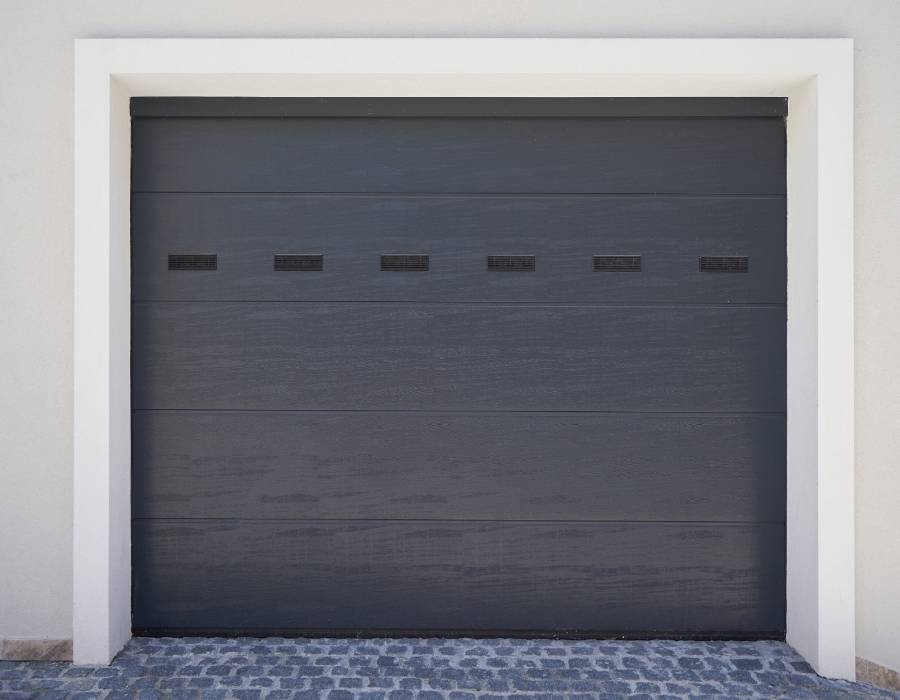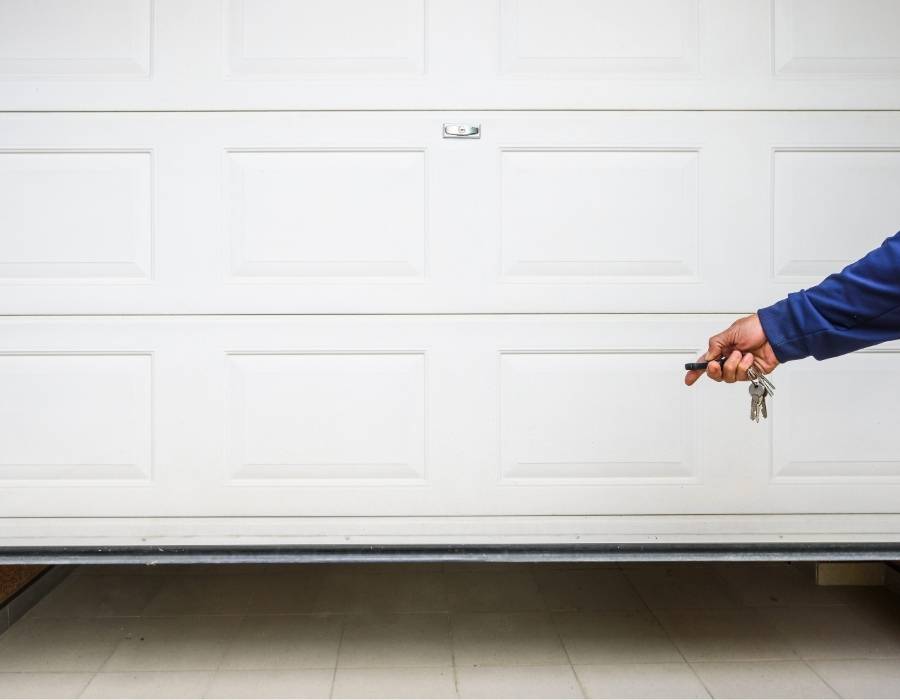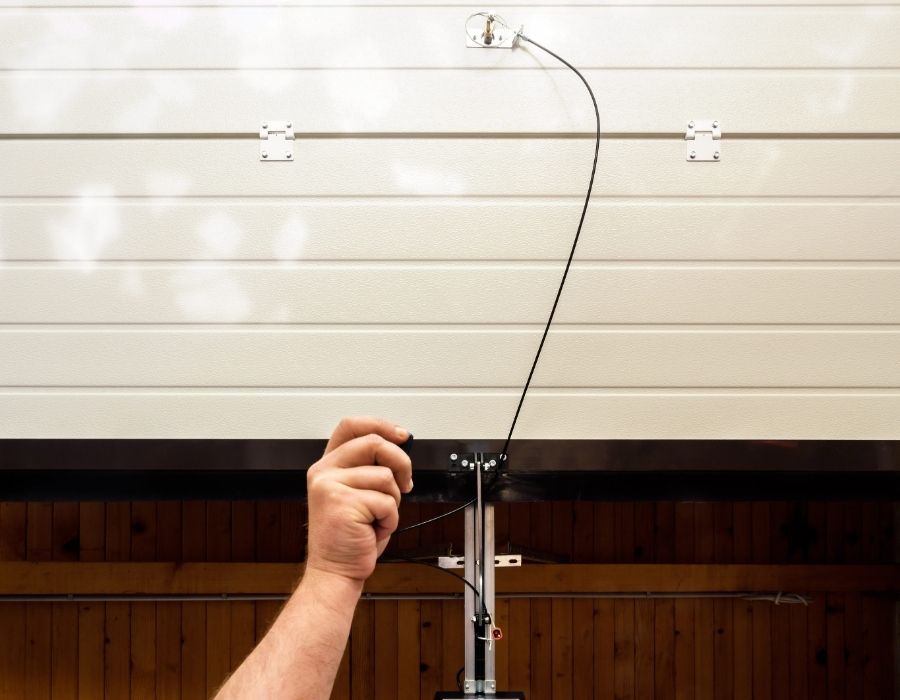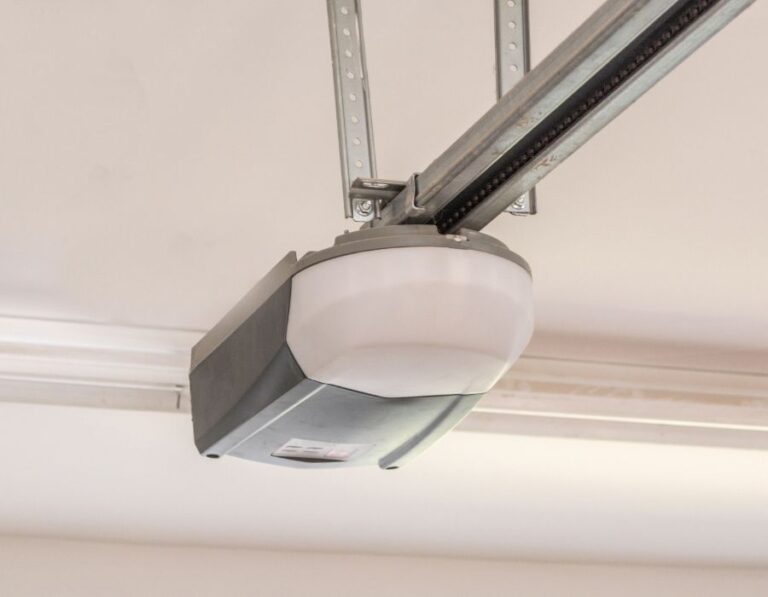A garage door is far more than just a functional entry point—it’s a key element of your home’s curb appeal, security, and overall functionality. The right garage door enhances your home’s aesthetics, improves energy efficiency, and ensures smooth daily operation. With a wide range of styles, materials, and operating mechanisms available, choosing the perfect garage door can feel overwhelming. From the timeless elegance of wooden carriage-style doors to the sleek modern look of aluminum and glass designs, each option offers unique advantages. In this guide, we’ll explore popular garage door types, compare materials and their benefits, discuss operating systems, and provide practical tips to help you make an informed decision that balances style, durability, and budget.
1. Common Types of Garage Doors
Garage doors come in a variety of styles, each offering unique benefits and suited to different spaces and needs. Below are the most common types and their key features:
1.1 Sectional Garage Doors
These doors are composed of horizontal panels hinged together, allowing them to open vertically and rest parallel to the ceiling when fully raised. They are ideal for homes with limited driveway space since they don’t swing outward. Sectional doors are highly customizable, often available with insulated options for better energy efficiency. However, the multiple moving parts require regular maintenance to keep them functioning smoothly.
1.2 Roll-Up Garage Doors
Made from horizontal slats that roll into a compact coil above the opening, roll-up doors are commonly used in commercial settings but are also suitable for small residential garages. Known for their compact design and durability, they require minimal maintenance. On the downside, they tend to have limited design and aesthetic options compared to other door types.
1.3 Slide-to-Side Garage Doors
As the name suggests, these doors slide horizontally along the garage wall instead of lifting vertically. They’re perfect for garages with limited headroom where ceiling space is at a premium. With fewer mechanical parts, they are easy to operate manually. However, they typically offer limited insulation options, making them less energy-efficient.
1.4 Side-Hinged Garage Doors
These traditional doors swing open like barn doors and bring a classic charm to garages. They’re best suited for vintage or rustic home designs and are easy to maintain due to their simple mechanism. While they offer convenient access, they require additional driveway space for the outward swing.
1.5 Tilt-Up Garage Doors (Up-and-Over)
Featuring a single solid panel that tilts upward and slides into the garage, tilt-up doors offer a clean, classic look. They are generally more affordable and have a simple operating mechanism. However, they require sufficient driveway space for the door to tilt outward during operation, which may not be ideal for homes with shorter driveways.
Each type of garage door has its strengths and trade-offs, so understanding your space, needs, and aesthetic preferences is key to making the right choice.

2. Garage Door Materials: Pros and Cons
Choosing the right material for your garage door is essential for balancing durability, aesthetics, and functionality. Below are the most common garage door materials, along with their advantages and drawbacks:
2.1 Steel Garage Doors
Steel garage doors are known for their strength, durability, and low maintenance requirements. They are available in insulated options, making them energy-efficient and suitable for various climates. However, without proper coating or regular upkeep, steel doors are prone to rust, especially in coastal or humid environments.
2.2 Wood Garage Doors
Wood garage doors offer an elegant, timeless appearance that adds character and charm to any home. They are highly customizable, allowing for unique designs and finishes. However, wood requires regular maintenance, including painting or sealing, to protect it from weather damage, warping, and rot.
2.3 Aluminum Garage Doors
Aluminum doors are valued for being lightweight and naturally rust-resistant, making them a great option for coastal areas or humid climates. They are also available in modern, sleek designs. However, aluminum is prone to dents, which can affect both appearance and functionality over time.
2.4 Fiberglass Garage Doors
Fiberglass doors are lightweight and resistant to rust, making them low-maintenance and ideal for damp environments. They can also mimic the look of wood without the associated upkeep. However, fiberglass offers limited insulation properties and may crack in extremely cold conditions.
2.5 Vinyl Garage Doors
Vinyl garage doors are celebrated for their durability, resistance to dents, and minimal maintenance needs. They are perfect for households that need a tough, child-friendly option. However, they offer limited color and style choices, which may restrict design flexibility.
How to Choose the Right Garage Door Style

Selecting the perfect garage door style goes beyond aesthetics—it’s about aligning functionality, climate suitability, and budget with your home’s overall design.
Match with Home Architecture: Your garage door should complement your home’s architectural style. For contemporary homes, sleek aluminum or glass-panel designs work well. Traditional homes often pair beautifully with classic raised-panel steel or wooden doors, while farmhouse-style homes look charming with side-hinged or carriage-style doors.
Climate Considerations: Weather conditions play a significant role in your garage door’s longevity and efficiency. For colder regions, insulated garage doors are essential to maintain energy efficiency and prevent heat loss. In humid or coastal areas, rust-resistant materials like aluminum or vinyl are better suited.
Budget and Maintenance Needs: Beyond the initial cost, consider long-term expenses like maintenance and energy efficiency. While wooden doors offer timeless beauty, they require frequent upkeep. Steel and vinyl doors might have a higher upfront cost for insulated versions but require less maintenance over time.
By carefully considering your home’s architecture, local climate, and long-term budget goals, you can make a choice that blends style, durability, and practicality seamlessly.
Garage Door Openers: Which System Suits You Best?
The right garage door opener is crucial for ensuring smooth, reliable, and convenient operation of your garage door. Different opener systems offer unique benefits, and choosing the best one depends on your needs, budget, and tolerance for noise.
Chain Drive: Known for being affordable and dependable, chain drive openers use a metal chain to lift and lower the garage door. While they are budget-friendly and durable, they can be noisy, making them less ideal for garages located near bedrooms or living spaces.
Belt Drive: These openers use a reinforced rubber belt instead of a chain, offering quiet and smooth operation. They are perfect for homes where noise is a concern, but they tend to be more expensive than chain drives.
Screw Drive: This system operates with a threaded steel rod, making it reliable and powerful, especially for heavy doors. However, screw drive openers require regular maintenance and lubrication to ensure smooth operation and prevent wear.
Smart Openers: The most advanced option, smart garage door openers offer remote access, smartphone control, and enhanced security features. With Wi-Fi connectivity, you can monitor and control your garage door from anywhere, providing unmatched convenience.
Energy Efficiency and Insulation: Why It Matters
Energy efficiency isn’t just a buzzword when it comes to garage doors—it’s a key factor in maintaining indoor comfort and reducing energy bills. An insulated garage door acts as a thermal barrier, preventing heat loss in winter and keeping your garage cooler in summer. This is especially important if your garage is attached to your home or serves as a workspace.
When evaluating insulation, pay attention to the R-value, which measures the door’s resistance to heat flow. Higher R-values indicate better insulation performance. Insulated garage doors not only help with temperature regulation but also reduce outside noise and add structural strength to the door.
If energy efficiency is a priority, look for doors with polyurethane or polystyrene insulation, as these materials offer excellent thermal resistance. Investing in an energy-efficient garage door isn’t just about comfort—it’s about long-term cost savings and environmental responsibility.
Maintenance and Longevity Tips: Keep Your Garage Door in Top Shape

Proper maintenance is essential for ensuring your garage door operates smoothly, safely, and efficiently for years to come. By following a few key practices, you can prevent costly repairs, extend the lifespan of your door, and maintain its overall functionality.
Regular Lubrication of Moving Parts: Apply a silicone-based lubricant to rollers, hinges, tracks, and springs every few months to reduce friction and prevent wear. This simple step keeps your door operating quietly and efficiently.
Check Weather Seals Annually: Inspect the weather stripping along the bottom and sides of the garage door for cracks, gaps, or signs of wear. Replacing damaged seals helps maintain insulation and prevent moisture or pests from entering.
Inspect for Rust and Damage Regularly: Check metal components, including springs, cables, and tracks, for signs of rust, fraying, or damage. Addressing these issues early prevents them from turning into bigger, more expensive problems.
Professional Servicing Annually: Schedule an annual inspection by a professional technician to ensure all components—like springs, cables, and safety systems—are in proper working order. Professionals can spot hidden issues and make precision adjustments that DIY efforts might miss.
Consistent maintenance doesn’t just protect your investment—it ensures your garage door remains a reliable, safe, and efficient part of your home for years to come.
Making an Informed Choice
Choosing the right garage door is about finding the perfect balance between style, functionality, and budget. Whether you’re upgrading an aging door or installing one for the first time, understanding the types, materials, insulation options, and operating systems is essential for making a choice that suits your home’s needs. A well-chosen garage door not only enhances your home’s curb appeal but also improves energy efficiency, security, and convenience.
Take the time to evaluate your priorities, consider your climate, and factor in long-term maintenance costs. And when in doubt, don’t hesitate to consult a professional garage door specialist who can guide you through the selection and installation process. With the right choice, your garage door will serve as a reliable, stylish, and functional feature of your home for years to come.






